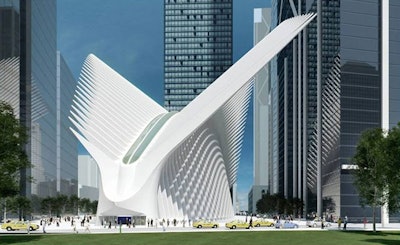
Reading The New York Times’ latest account of the costly and troubled World Trade Center Transportation Hub project, there came a point where I recognized that the scale of the disaster — $2 billion over budget and six years behind schedule — was all that separated that project from the typical campus project beset by scope creep.
 Author Oliver Snider is the director of business development for the design-build firm Stanmar Inc.
Author Oliver Snider is the director of business development for the design-build firm Stanmar Inc.
On a college or private school campus, scope creep can be brought on by anyone at the table during the planning process. The lead donor on an athletic or recreation project, or even a wealthy alum who has not yet committed to the capital campaign, might be an enthusiast of a particular sport, and make the gift contingent upon its addition to the building: “If you put in squash courts, I’ll fund the building.”
Another typical situation occurs when well-meaning administrators begin to solicit input from different potential user groups on campus. Administrators of the school’s dance program, say — or students in the program, or even students’ parents — may then pressure the planning committee to set aside space, or more space, for dance. As program space is added and associated spaces get that much bigger to accommodate these additions, so does the project budget.
RELATED: Successful Project Design Borne of Strong Relationships
The way the majority of building projects are bid, this is a real danger. Here’s how it can happen within the design-bid-build project delivery method: The architect spends time listening to the campus planning committee, trustees, program administrators and students until the clients’ goals for the project have been made clear. The architect typically benchmarks the school against its direct competitors, or other schools of similar size and reputation, and comes up with a design that reflects “the building you need” to set yourself apart from other schools. If your budget will allow only for the inclusion of a one-court gymnasium, but “the building you need” requires a two-court gym and a multi-activity court (your competitors all have one), you’ve just witnessed scope creep — and you’re about to experience budget creep.
School or program administrators can have a similar tendency to allow competing needs — for a “transformational” facility, as one headmaster at a private college preparatory school recently called a planned wellness center — to swamp other concerns, such as whether they can actually afford their own (or their architect’s) vision. The importance of fully understanding and prioritizing your needs before you bring in professionals to consult on or take charge of your building project is therefore paramount. You should also bear in mind that there are other project delivery methods, such as design-build, that can shift the risk of scope creep from the owner to the contractor, so do your research early on delivery methods that might be a better fit for your institution.
Last, remember that although many professionals will eventually be involved in bringing your new building to life, you are the best situated of anyone sitting at the planning table to retain control of the planning process. An anecdote from the Times’ story is both entertaining and instructive. Calatrava’s initial design called for a roof made of two huge movable wings, and in 2005, Port Authority officials were “not yet convinced that the roof was practical to build,” wrote David W. Dunlap. “Authority officials including David Steiner, a board member, visited the Milwaukee Art Museum to see Mr. Calatrava’s operable roof there, [and] as they waited outside the museum, the officials were joined by schoolchildren who had also come to watch. When the screen opened, the children applauded. Mr. Steiner turned to Mr. Calatrava and, according to the recollection of those who were there, said: ‘O.K., Santiago. You can have your goddamn wings.’ It would take another three years to kill this exorbitant idea.”
RELATED: How Stadium Construction Costs Reached the Billions
There were too many such moments in the transportation hub’s history to pin the blame on one particular official, but the fact is that an official’s acquiescence in the face of cheering schoolchildren was a decision worth tens, if not hundreds of millions of dollars. I could relate to it on one level — our clients depend on athletic facilities to increase enrollment and retention, and they want the “Wow!” factor that Calatrava’s movable wings promised. Unfortunately, too many school officials fail to take control of their own projects — and believe me, cost overruns on a small scale can have just as devastating an effect on institutions. Overruns of $2 billion get on the front page of The New York Times, but $100,000 is a big deal to many colleges and private schools, the difference between coming in on budget and needing to take out a bond.
In short, an architect or an owners’ representative may have a vision for the building you need, but your vision is the one that counts. Absent design-build’s guaranteed price, it is vital for an owner to understand where the risk is. Successful architects and successful design-build firms share the trait of a commitment to helping an owner establish a budget. New York failed to do it — and, unfortunately, this won’t be the last time that a horror story like this is written and captures the attention of an incredulous public.
RELATED: Understanding Bids and Specs: Get the Best Value When Building
Oliver Snider ([email protected]) is director of business development for Stanmar Inc., a Wayland, Mass.-based design-build firm specializing in multipurpose athletic facilities.




































